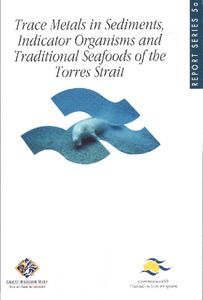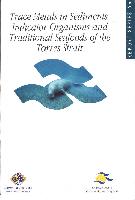Please use this identifier to cite or link to this item:
https://hdl.handle.net/11017/262

| Title: | Trace metals in sediments, indicator organisms and traditional seafoods of the Torres Strait |
| Authors: | Gladstone, W. Great Barrier Reef Marine Park Authority |
| Keywords: | Water quality biological assessment;Metals - Environmental aspects;Trace elements |
| metadata.dc.subject.asfa: | Trace metals Indicator organisms Heavy metals |
| APAIS Subject: | Torres Strait Islands Pollution |
| metadata.dc.subject.category: | Research Water quality |
| Year of publication: | 1996 |
| Publisher: | Great Barrier Reef Marine Park Authority |
| Abstract: | The Pilot Study of the Torres Strait Baseline Study (TSBS) concluded that the Fly River is the major source for the northern Torres Strait of fine-grained terrigenous sediments with an associated suite of trace metals (including aluminium, cobalt, chromium, copper, iron, manganese, nickel, lead, silicon and zinc), some of which increased in concentration after the monsoon season (Dight and Gladstone 1993). Concentrations of metals within this suite are low in the central and eastern Torres Strait. Other trace metals in Torres Strait marine sediments occurred at higher concentrations in either sediments with coarse-grained carbonate sediments of marine origin (cadmium, magnesium), or were not associated with any particular sediment type (arsenic, mercury and selenium). |
| URI: | https://hdl.handle.net/11017/262 |
| ISBN: | 9780642254788 |
| Type of document: | Report |
| Appears in Collections: | Management |
Files in This Item:
| File | Description | Size | Format | |
|---|---|---|---|---|
| Trace-metals-in-sediments-indicator-organisms-and-traditional-seafoods-of-the-Torres-Strait.pdf | 7.7 MB | Adobe PDF |  View/Open |
Items in ELibrary are protected by copyright, with all rights reserved, unless otherwise indicated.
